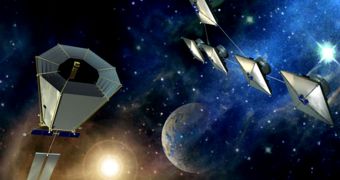Once, the American space agency had big plans for the future, including in the new field of extrasolar planetary research. Not so much these days, though, as evidenced by the cancellation of the Terrestrial Planet Finder (TPF) and the Space Interferometry Mission (SIM). Astronomers are very upset at this.
They say that the two missions, and others that will not see the light of day, were critically needed to make sense of the Universe we life in, helping to detect more and more exoplanets. Eventually, the work could lead to the discovery of an Earth-analog.
Chief among those opposing the fund cuts is famed astronomer Geoffrey W. Marcy, who is a professor of astronomy at the University of California in Berkeley (UCB). More than 20 years ago, when he first began looking for exoplanets, his colleagues laughed at him.
Now, 500+ confirmed discoveries and 1,235 candidates later, the international astronomical community owes him a debt of gratitude. Of the first 100 exoplanets ever to be discovered, Marcy and colleagues R. Paul Butler and Debra Fischer found 70.
The expert now decries the cancellation of TPF and SIM, saying that a lack of collaboration within NASA and the international community is clearly visible in exoplanetary research, Space reports.
“I'm unhappy about the last 10 years, and the next 10 years,” he told attendants at the “The Next 40 Years of Exoplanets” symposium, which was held at the Massachusetts Institute of Technology (MIT), in Cambridge, on May 27. MIT planetary scientist Sara Seager organized the meeting.
“I think the case for TPF is more compelling thanks to Kepler,” Marcy said, referring to the now-scrubbed mission. Its capabilities would have exceeded those of NASA's current planet-hunting telescope, allowing for even more progress to be made on this front.
The mission would have deciphered exoplanets “from their formation and development in disks of dust and gas around nearly-forming stars, to their suitability as abodes of life,” a NASA description reads.
The fact that TPF scientists went up against SIM scientists in competing for funding (and vice-versa) eventually drove the nail through both missions' coffins, as the saying goes. SIM was canceled even after NASA invested years of study, and $600 million in research.
“Where’s the insight? What's the culture that allows mistakes like this to happen?” Marcy asked at the meeting. “That was the most embarrassing thing I've seen in my life,” said in response Jet Propulsion Laboratory (JPL) expert Wesley Traub.
The expert has worked on both SIM and TPF, and now holds an appointment as the Chief Scientist for the NASA Exoplanet Exploration Program. “In exoplanets, we divided and got conquered,” Seager concluded the symposium on a bleak tone.

 14 DAY TRIAL //
14 DAY TRIAL //